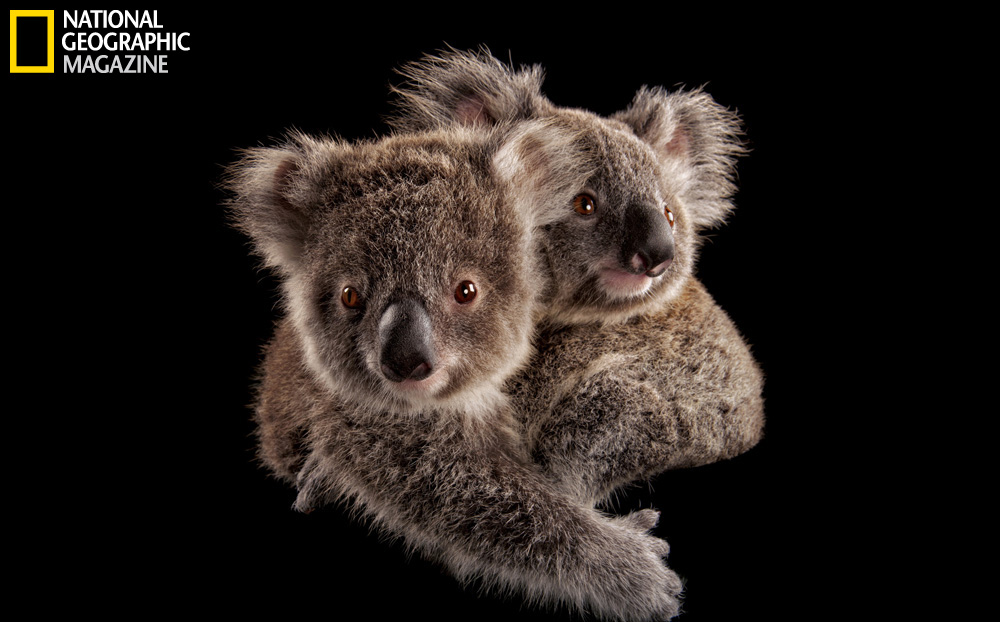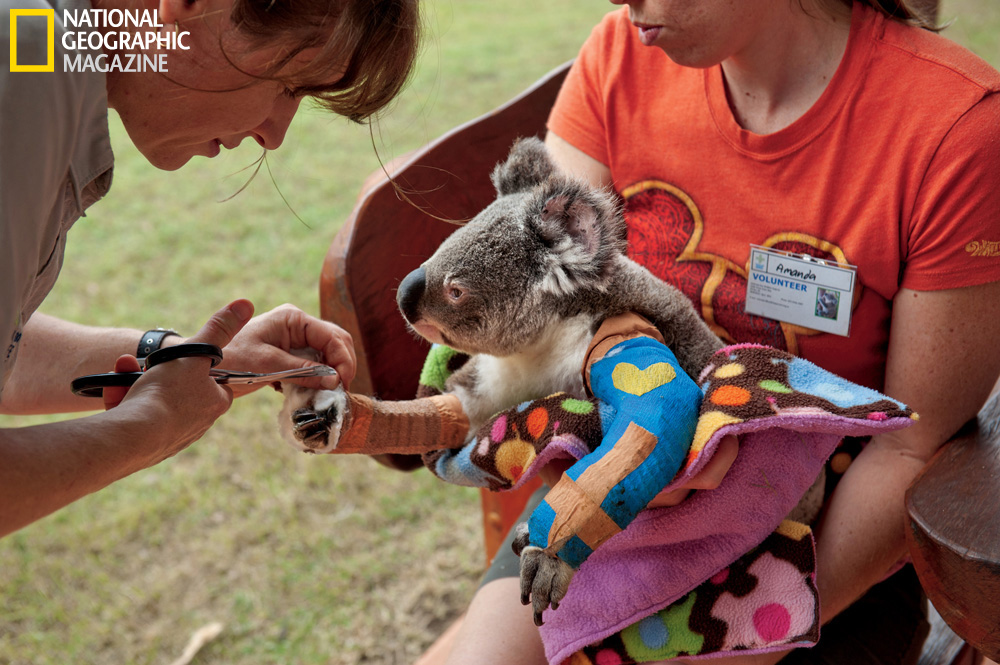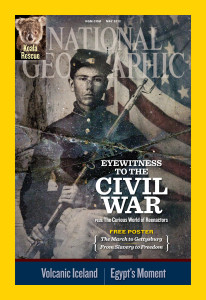If I could go back and do it all again, I’d try to be a National Geographic correspondent. I just can’t get enough of their work- I’m quite certain this magazine is the reason I studied biology and primates. Today, I’m fortunate enough to have an excerpt and some amazing photographs about a koala story that I hope you find as fascinating as I do. (Look at the avatar on the Be the Change section of the site if you want to know how much I love them.)
I had always assumed koalas were in pretty good shape. Other than watching them shyly chomping on eucalyptus at the zoo, I’ve never seen one in its natural habitat, and I figured- hey, I have plenty of time to make it to Australia. But as an article in the May issue of National Geographic excerpted below asserts, the koala is in danger:
The koala, cuddly symbol of a nation and one of the most beloved animals on the planet, is in crisis. Before Europeans settled Australia more than two centuries ago, about ten million koalas lived in a 1,500-mile-long swath of the east coast eucalyptus forests. Hunted for their luxurious fur, koalas were brought to the edge of extinction in the southern half of their range. In the northern half, Queensland, a million were killed in 1919 alone. After the last open season in Queensland was held in 1927, only tens of thousands remained.
Through the next half century their numbers slowly rebounded, in part due to efforts to relocate and recolonize them. Then urbanization began to take its toll. Habitat was lost, and diseases spread. With urbanization came the threat of dogs and highways. Since 1990, when about 430,000 koalas inhabited Australia, their numbers have dropped sharply. Because surveys are difficult, current population estimates vary widely—from a low of 44,000 by advocacy groups to a high of 300,000 by government agencies. More than a decade ago a survey of the Koala Coast, a 93,000-acre region in southeastern Queensland, estimated a koala population of 6,200; today there are believed to be around 2,000.
“Koalas are getting caught in fences and dying, being killed by dogs, struck by vehicles, even dying simply because a homeowner cut down several eucalyptus trees in his backyard,” says Deidré de Villiers, one of the chief koala researchers at the Queensland Department of Environment and Resource Management. For 15 years de Villiers, 38, has been tracking koalas, monitoring populations, studying the reasons for their decline, and creating guidelines to make development more koala-friendly.
De Villiers insists that koalas and humans can coexist in urban environments “if developers get on board with koala-sensitive designs,” such as lower speed limits for streets, green corridors for koala movement, and, most especially, preserving every precious eucalyptus tree. Unfortunately, koalas have another problem.


I MUST GET ON A QANTAS FLIGHT RIGHT NOW AND SMOOCH THIS CREATURE AND SAVE ALL THE KOALAS.
I had access to a third photo, a scene of a “koala morgue”, but it was so sad I decided not to post it here. You can see the full series here.
This excerpt and photo selection, used with permission, are from the May issue of National Geographic Magazine – on newsstands and ipad now. And for more from the fantastically talented photographer, check out his website, JoelSartore.com. OK, so who’s coming Down Under with me next week? 🙂







Me! Me! Me! And I’m gonna bring a pouch to carry a joey in, some eucalyptus trees to plant, and a few thousand, “Slow for crossing Koala’s” signs to put on the roads. When do we leave? (and some chapstick, cause my lips are gonna get dry smooching all those adorable black noses and tufted ears)
Of course I clicked on the link. Despite your warning. That was horrifyingly sad. You are so right, who knew? I’ve heard alot about the polar bears….nothing about these sweet guys. And you can coexist with a Koala…unlike a polar bear. How sad. This is one of those things like The Cove where I think the right public education campaign can work miracles. Most people just don’t know.
I was lucky enough to go to Melbourne years ago for my cousin’s wedding and saw quite a few koalas hanging out in trees both in and out of the zoo. While they look all cuddly, they’re actually quite aggressive if they feel threatened and make some not-as-cute grunting/yowling sounds. Still love them, though, and would love to go back.
I’m shocked and saddened to hear that their population has dwindled so much, especially considering that it is a species where it is possible for coexistence with humans.
If I saw nothing but threats wherever I turned, I’d be aggressive too. I am in those situations. I didn’t realize how threatened they are. It breaks my heart.
I live right in the heart of koala country. our local council has just approved a koala management plan to protect koala habitat. I can only hope it’s going to be enough. I’m always telling people to keep their pets restrained for the good of the wildlife, especially the koala.
it’s amazing to see koalas in zoos, but it’s even more incredible to see one in the wild. especially when they have joeys and you see a teeny, tiny little paw reaching out to grab a leaf! I’ve held an orphan joey before (I knew his foster mum) and all I could do was go “SQUEE!” then kiss his little head. they really are as soft as they look and their noses are soft too.
Me too 🙂 Or someone who lives in a tent and studies wild animals in whatever natural habitat is left. If I could go back in time, I would. Since I cannot, I try to learn whatever I can and spread the knowledge to others…and hope it makes a little bit of a difference.
Nice post!